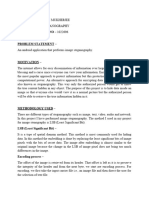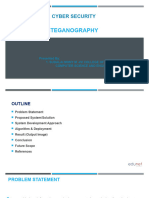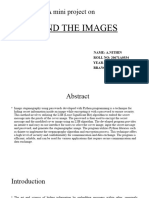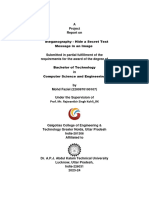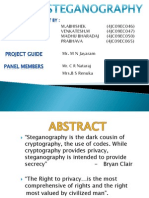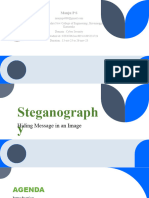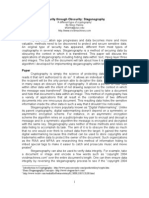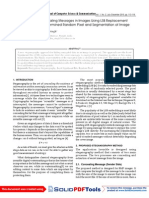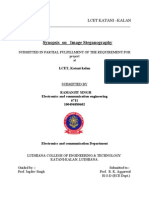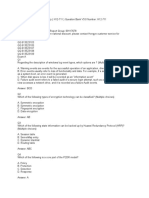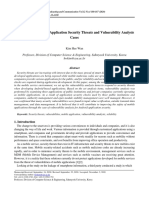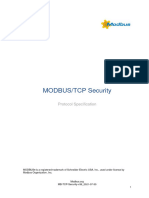0% found this document useful (0 votes)
7 views3 pagesPixelCrypt Project Report
PixelCrypt is a lightweight image steganography tool that securely hides messages within digital images using the Least Significant Bit (LSB) technique, with an optional AES encryption feature. It aims to provide private communication without revealing the existence of the messages, featuring a user-friendly interface for easy access. The tool has demonstrated successful message embedding and extraction while maintaining the visual integrity of the images.
Uploaded by
mataca3545Copyright
© © All Rights Reserved
We take content rights seriously. If you suspect this is your content, claim it here.
Available Formats
Download as DOCX, PDF, TXT or read online on Scribd
0% found this document useful (0 votes)
7 views3 pagesPixelCrypt Project Report
PixelCrypt is a lightweight image steganography tool that securely hides messages within digital images using the Least Significant Bit (LSB) technique, with an optional AES encryption feature. It aims to provide private communication without revealing the existence of the messages, featuring a user-friendly interface for easy access. The tool has demonstrated successful message embedding and extraction while maintaining the visual integrity of the images.
Uploaded by
mataca3545Copyright
© © All Rights Reserved
We take content rights seriously. If you suspect this is your content, claim it here.
Available Formats
Download as DOCX, PDF, TXT or read online on Scribd
/ 3





